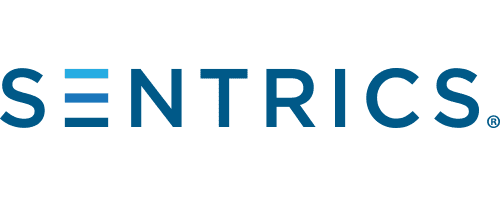The Role of Technology in Post-Pandemic Senior Care Deliver
The COVID-19 pandemic has changed the way that the world operates. Some of those changes may only be temporary. Others will have far more lasting impacts, especially for senior living communities.
As we continue to wrestle with the implications of this coronavirus pandemic, there are a few revelations that we can learn from and apply in the coming months and years. For senior living communities, COVID-19 has highlighted the flaws of some long-standing practices and demonstrated the need for innovation.
Specifically, there have been three areas that will likely be redesigned in our post-pandemic world, even long after COVID is relegated to the history books. They are:
- Residential environments and design
- Care provision and management
- Operations and staffing
Ultimately, residents and their families will be looking for a community that says, “We’ve thought about it, we’ve prepared for it, and we’re ready for anything the future throws our way.” Here are some post-pandemic senior living changes you can expect in the future.
Residential Environments, Design, and Planning
As one might have expected, senior housing occupancy sharply decreased in Q2, falling 2.8% in the second quarter of 2020 from 87.7% to 84.9%. This is its lowest recorded level. These numbers demonstrate a simple truth—many people are fearful of placing their loved one in a care community.
To change this risk calculation in our post-pandemic world, families and residents need reassurance. They need to know that their health, safety, and wellbeing is paramount. To do that, providers must demonstrate that they’re doing everything in their power to protect their community.
The simple truth is, most senior living communities weren’t built for infection control. For the right reasons, they were focused instead on communal building and centralized living. In a way, it was too group focused—many meals, activities, and engagement opportunities were in-person, in large groups, and in tightly packed areas.
That won’t work any longer in our post-pandemic landscape.
To be fair, the advent of a black swan event caught everyone off guard. But now, the coronavirus pandemic has spurred a long list of potential designs and environmental changes that should be considered going forward. As architect and designer Ben Seager notes:
“Smaller-scale tweaks to building systems and finishes are definitely here to stay. These include higher-quality air filtration, UV lighting and finishes like antimicrobial surfaces and acrylic fabric on the furnishings. Features that limit manual contact, such as touchless light switches and faucets, are easy to implement and can rein in the spread of germs.”
One trend that will likely remain long term after this crisis is the idea of having flexible common spaces that can allow for social distancing.Those spaces can then be repurposed and used for other activities when needed. Similarly, other social distancing ideas include smaller, self-contained areas or satellite dining and activity areas with enhanced outside spaces.
Going forward, a “COVID-ready” building design can be a differentiating factor for senior living communities, making it more difficult for any contagious illness to spread and easier to conduct contact tracing. For instance, according to Joseph Jamson, CEO of AHMG:
“Elevate communities use a small house concept. They have 96 to 104 units and are 55,000 square feet. Six neighborhoods each have private rooms for up to 16 residents, plus multi-use common spaces. When it comes to illnesses such as COVID-19, the design allows communities to isolate a neighborhood easily and not affect an entire building.”
Finally, when it comes to engagement, the idea of in-person, large group gatherings can no longer function as the be-all end-all. Instead, providers have to consider new ways that their communities leverage technology to facilitate engagement, even when residents are quarantined during a crisis.
For instance, there are now tech-forward solutions that can transform a resident’s TV into a social, health, and wellness engagement engine, keeping residents entertained, active, and connected—all from the safety of their room.
Care Delivery
Residents’ abilities to receive in-person treatment have also been hampered by COVID restrictions. Some residents were too frightened of the virus to leave their apartment, others were simply unable to visit the doctors. This, along with restricted access to emergent care, has created a problem, especially for the management and treatment of healthcare concerns aside from COVID.
In response, many communities have turned to technology to bridge the gap and ensure the delivery of care. Telehealth services have made it easier and safer for residents to meet with their care providers without ever having to venture from the safety of their apartment and risk contracting the virus.
There’s also been a shift toward expanding in-house primary care facilities. This expansion is largely due to the competitive advantages this brings to communities combined with the number of community-sponsored Medicare Advantage Programs and Benefits on the market. Per Senior Housing News:
“For the 2020 year, [there were] 150 institutional special needs plans (I-SNPs) operated around the country. Those plans very often are offered in nursing homes, but also offered in assisted living. Of those plans, there were 150 in 2020, and [there will be] 174 in 2021.”
When it comes to care management protocols in relation to COVID, senior living communities must embrace a disease management care model. This represents yet another area where technology can provide a solution to the problem.
For instance, contact tracing and care management technologies can help you:
- Identify who’s at-risk automatically
- Determine levels of contact
- Establish consistent case management protocols
- Simplify protocol reporting
This year has highlighted an often forgotten truth—we do not know what the future holds. To protect your residents, it’s critical that you have the infrastructure in place so that you’re prepared for anything, whether it’s the seasonal flu (which can be deadly for seniors) or a more serious viral pandemic.
Operational
Operationally speaking, the pandemic has pointed out three major issues that must be addressed going forward. These include:
Labor Management
The senior care industry already had high rates of employee turnover prior to the pandemic. Since then, in some cases, the additional stress and environmental constraints have exacerbated many of the underlying structural issues with labor management, leading to understaffing and inefficiencies.
Kathleen Weissberg, education director for Select Rehabilitation, explained at the LeadingAge 2019 conference in San Diego that even the most basic tools and technologies can improve caregiver satisfaction and make a positive impact in a tight labor market.
Supply Chain Issues
In the wake of the initial wave of the pandemic, there was a rush on personal protective equipment and other sanitary items. This led to shortages, particularly in places where they were needed most.
In the future, forward-thinking senior living communities will need to either stockpile PPE reserves or be mindful about how they manage supplies so that they can be better prepared for temporary scarcity issues. This is a smart and empathetic way to signal to staff, residents, and families that you’re taking safety seriously.
Lack of Transparency in Reporting
All too many senior living communities were caught on their heels when the pandemic struck. As a result, they lacked the technology infrastructure to properly capture all of the important data about residents and communities.
Senior living communities must be transparent and adopt integrated systems that make it easy to roll up data across residents and staff on their health and activity. Armed with this data, providers can anticipate and act to minimize health and socialization concerns. Having easily accessible information creates better reporting for senior management as well as required reporting for state and county agencies.
By doing this and then embracing a model of transparency, you can help ease the concerns of residents, family, and staff.
Rethinking Senior Living with Sentrics
It’s time to rethink senior living. Now is an opportunity for introspection, to see where you succeeded and failed. For many communities this episode has highlighted a variety of legacy issues within senior living, especially in regard to:
- Residential environments and design
- Care provision and management
- Operations and staff
So, the question now is how do you respond to these issues? How do you adapt to the new normal while preparing for any and all future challenges?
Today, a growing number of providers are turning to technologies such as the Sentrics360 platform to help them protect and support their residents.
Want to see how Sentrics can help you revolutionize senior living?
Sources:
- NIC. Senior Housing Occupancy Decreases Sharply in Second Quarter Due to COVID-19. https://www.nic.org/news-press/senior-housing-occupancy-decreases-sharply-in-second-quarter-due-to-covid-19/
- Multi-housing news. What Will and Won’t Change in Senior Housing Design. https://www.multihousingnews.com/post/what-will-and-wont-change-in-senior-housing-design/
- NBC.Pandemic will drive major changes to the nursing home industry. https://www.cnbc.com/2020/05/24/how-coronavirus-pandemic-drive-major-changes-in-nursing-homes.html



